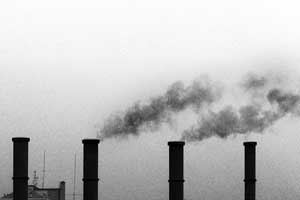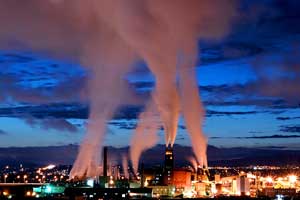
Photo by flickr user <a href="http://www.flickr.com/photos/isphoto/116909896/">isphoto</a> used under a <a href="http://www.creativecommons.org">Creative Commons</a> license.
The Waxman-Markey climate bill has the environmental community agonizing over a tough decision: Pass an imperfect bill now, or wait and make it stronger, a process that could take years. Here’s a look at the high and low points of the controversial bill.
Emission Reductions
The Good
Would cut and offset emissions by as much as 17 percent below 1990 levels by 2020
The Bad
Watered down from original goal of 19 percent
The Ugly
Scientists say a 25 to 40 percent cut is needed to avert catastrophic climate change.
Efficient and Renewable Energy
The Good
Requires states to generate 20 percent of their electricity from renewable sources and energy efficiency improvements by 2020
The Bad
Watered down from original goal of 40 percent by 2025
The Ugly
Because the requirement would supersede stricter laws in states such as California, the US Energy Information Administration estimates that it might have the overall effect of hampering clean energy production.
Coal Power
The Good
Requires new coal plants built after 2009 to capture 50 percent of their carbon emissions
The Bad
The requirement doesn’t go into effect until 2025
The Ugly
Strips the EPA of its authority under the Clean Air Act to regulate CO2 emissions from new and existing coal plants
Cap and Trade
The Good
Ambitiously caps emissions at 68 percent below 1990 levels by 2050 by creating a market in tradable emissions permits
The Bad
By 2020, the cap will have cut emissions by only 4 percent
The Ugly
Only 15 percent of the tradable emissions permits will be auctioned off by the government; the bill hands out another 50 percent of the permits to the fossil fuel industry for free.
Offsets
The Good
Emission reduction projects funded through carbon offsets must be verifiable, permanent, and “additional,” meaning that the projects would not have occurred on their own.
The Bad
If US polluters use all of the offsets allowed under the bill—equivalent to 2 billion tons of CO2 per year—they won’t have to start cutting their own emissions until around 2025.
The Ugly
Despite similar regulation of offsets under the Kyoto Protocol, a 2008 analysis from Stanford found that between one-third and two-thirds of the projects did nothing to counteract carbon emissions.












